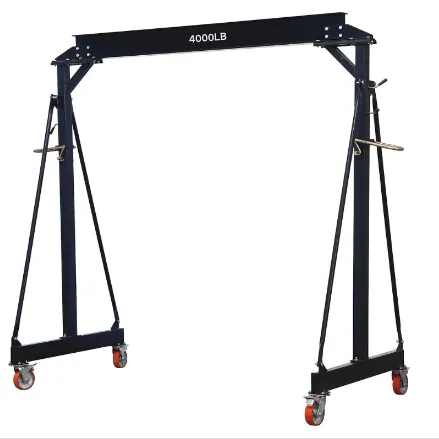Using Rollers for Transporting Heavy Machinery Efficiently and Safely
The Efficiency of Rollers in Moving Heavy Equipment
In the construction and industrial sectors, the transport of heavy equipment is a common necessity. Maneuvering heavy machinery poses significant challenges, often involving cumbersome logistics and potentially hazardous operations. However, the advent of rollers has revolutionized the way we approach this task. Rollers are cylindrical devices that facilitate the movement of large, heavy objects with minimal effort, enhancing efficiency and safety in various applications.
Understanding Rollers
Rollers come in various shapes and sizes, tailored to the specific requirements of the equipment being moved. They work on the principle of reducing friction between the ground and the object being transported, allowing for easier movement. From simple wooden logs used by ancient civilizations to sophisticated engineered solutions like pneumatic rollers, the evolution of rollers mirrors advancements in engineering and materials science.
Applications in Heavy Equipment Transport
In heavy equipment transport, rollers play a crucial role. They are widely used in various settings, including construction sites, warehouses, and manufacturing plants. Large machinery such as excavators, cranes, and tractors can weigh several tons, making manual handling both impractical and unsafe. Rollers enable operators to glide these massive machines across surfaces with minimal force, significantly reducing the risk of injury and equipment damage.
One of the most common applications of rollers is in conjunction with machinery skates. These skates are platforms equipped with rollers designed to support the weight of heavy equipment. By positioning the skates under the machinery, operators can easily push or pull the load along a flat surface. This system is particularly effective in tight spaces where traditional transportation methods may struggle.
Advantages of Using Rollers
rollers moving heavy equipment

The use of rollers brings numerous advantages to heavy equipment transport. Firstly, they vastly improve mobility. By decreasing friction, rollers allow heavy objects to be moved with less physical effort, significantly reducing the strain on workers. This ease of movement also allows for quicker repositioning of equipment, which can be critical in fast-paced environments such as construction sites.
Secondly, rollers can enhance safety. Heavy lifting and maneuvering presents numerous hazards, including accidents and injuries among personnel. By allowing for smoother and safer movement, rollers mitigate these risks. Workers can maintain a safer distance from machinery during transport, reducing the likelihood of accidents.
Moreover, using rollers can lead to cost savings for companies. The efficiency gained in moving heavy equipment means projects can be completed faster, reducing labor costs and downtime. Additionally, the reduced wear and tear on machinery from facilitated movement can prolong equipment lifespan, leading to lower maintenance and replacement expenses.
Considerations for Roller Use
While the benefits of using rollers are clear, there are also important considerations to ensure their effectiveness. The surface on which rollers are used must be suitable—smooth, flat surfaces work best. Uneven or rough terrains can hinder the movement and may require additional equipment or different types of rollers designed specifically for rugged conditions.
Furthermore, operators should be trained in the correct use of rollers to avoid mishaps. Properly positioning the rollers and maintaining a balanced load are essential to prevent tipping or control loss during movement.
Conclusion
In conclusion, rollers have become an invaluable tool in the movement of heavy equipment across various industries. By enhancing efficiency, improving safety, and decreasing operational costs, they represent a significant advancement in material handling. As technology progresses, we can expect further innovations in roller design and applications, continuing to make heavy equipment transport safer and more efficient. Embracing these advancements not only improves productivity but also safeguards the well-being of workers, a crucial consideration in any industrial setting. The future of heavy equipment transport rests on the continued evolution and implementation of such ingenious solutions as rollers.
-
Unlock Seamless Relocation with Our Heavy Equipment Moving ExpertiseNewsJun.06,2025
-
Unleash Unrivaled Flexibility with Our Adjustable Gantry CraneNewsJun.06,2025
-
Unleash Heavy-Duty Efficiency with Our Industrial Gantry Crane SolutionsNewsJun.06,2025
-
Revolutionize Steel Handling with Our Magnetic Lifter RangeNewsJun.06,2025
-
Master Equipment Mobility with Premium Machinery Mover SolutionsNewsJun.06,2025
-
Elevate Your Material Handling with Magnetic Lifter TechnologyNewsJun.06,2025
-
YS Permanent Lifting Magnets: The Smarter Way to Handle SteelNewsMay.22,2025
